Stretch wrap seems to be a must-have when it comes to protecting opened foodstuffs destined for our refrigerators.
As a single-use product, it is the cause of considerable pollution, all the more so as, soiled by food, you can't count on being able to recycle it. It's even advisable to dispose of it in your household waste garbage can for incineration.
However, there are alternative solutions, and iD! lists 4 simple ways to eradicate plastic stretch film from your kitchen.
1. Elastic silicone lids
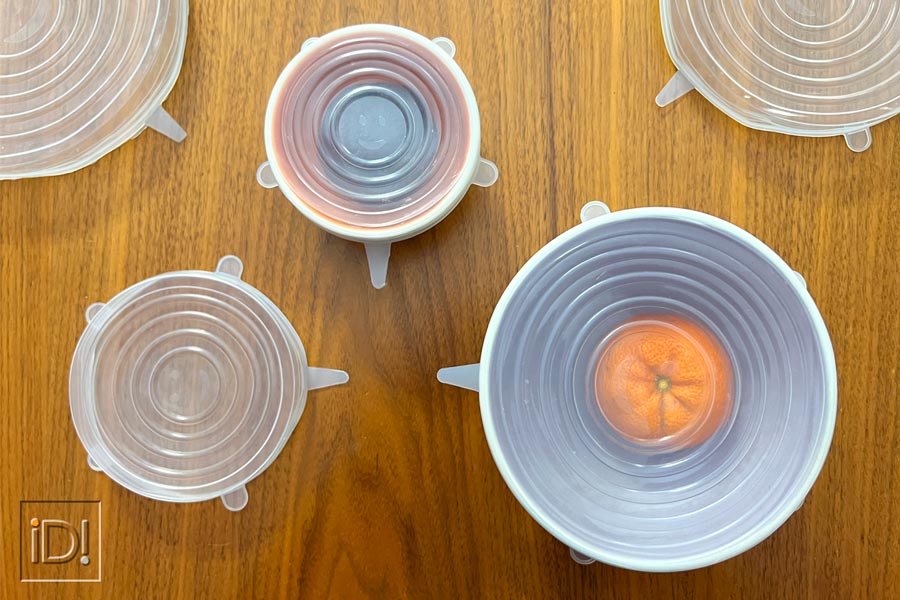
Extremely economical to buy and practical to use, whether round or rectangular, they are universal in that they fit virtually all containers, whether glasses, bowls, dishes or saucepans.
Thanks to their 100% silicone composition, they are highly elastic, can be used hot or cold, and adhere to all surfaces.
Unlike plastic, silicone is an "inert" product that is not supposed to release toxic substances into the environment.
It's the simplest alternative to stretch film.
The benefits:
- Can be used in fridge, freezer and microwave.
- Long-lasting.
- Playful and elastic, they're great for teaching children a few environmentally-friendly gestures.
Disadvantages:
- Silicone is difficult to recycle.
2. Universal Vacuum Lid
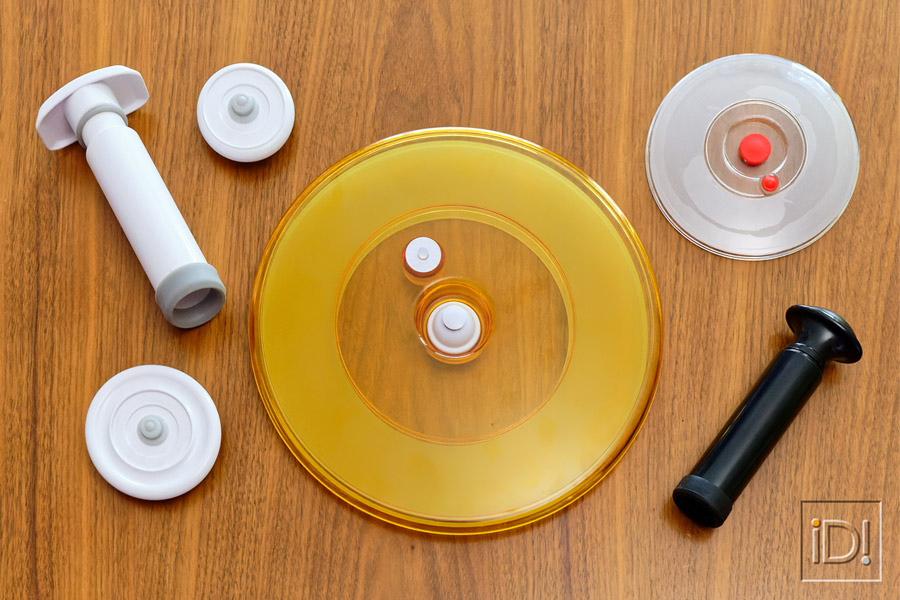
These reusable lids offer the best possible food protection.
Although they are made of plastic (recyclable) and silicone (not recyclable), they make it possible to eliminate the use of plastic stretch film in your fridge for good.
If you take good care of them, they'll last well over ten years. It's always better than using single-use stretch film.
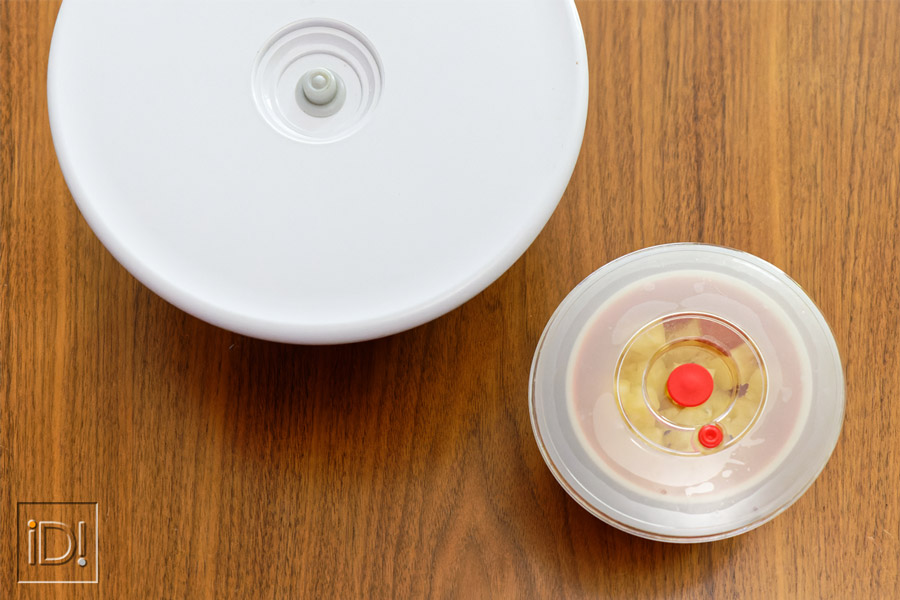
Suitable for use on any container with a regular, unchipped rim, a lid with valve allows food to be stored and protected in a refrigerator by creating a vacuum using a small, manually-operated pump.
The benefits:
- Excellent food preservation thanks to vacuum.
- Eliminates the need for plastic film.
- Excellent product durability.
- Can be used on all glass containers in the kitchen.
- Can be used on cans.
Disadvantages:
- Relatively expensive to buy, these lids should not be expected to pay for themselves for 3 to 5 years, depending on your consumption of stretch film.
- Silicone caps and pumps are more or less recyclable.
This solution has been validated by iD!, which has been using this type of cover for over 10 years.
3. Containers with food-safe lids
The success of the Tupperware brand in the 1950s gave the generic name to all-plastic containers.
In our kitchens, we can opt for heavier but slightly more environmentally-friendly mixed glass models with plastic lids, or better still, traditional all-glass jars (with a rubber seal) or metal lids.
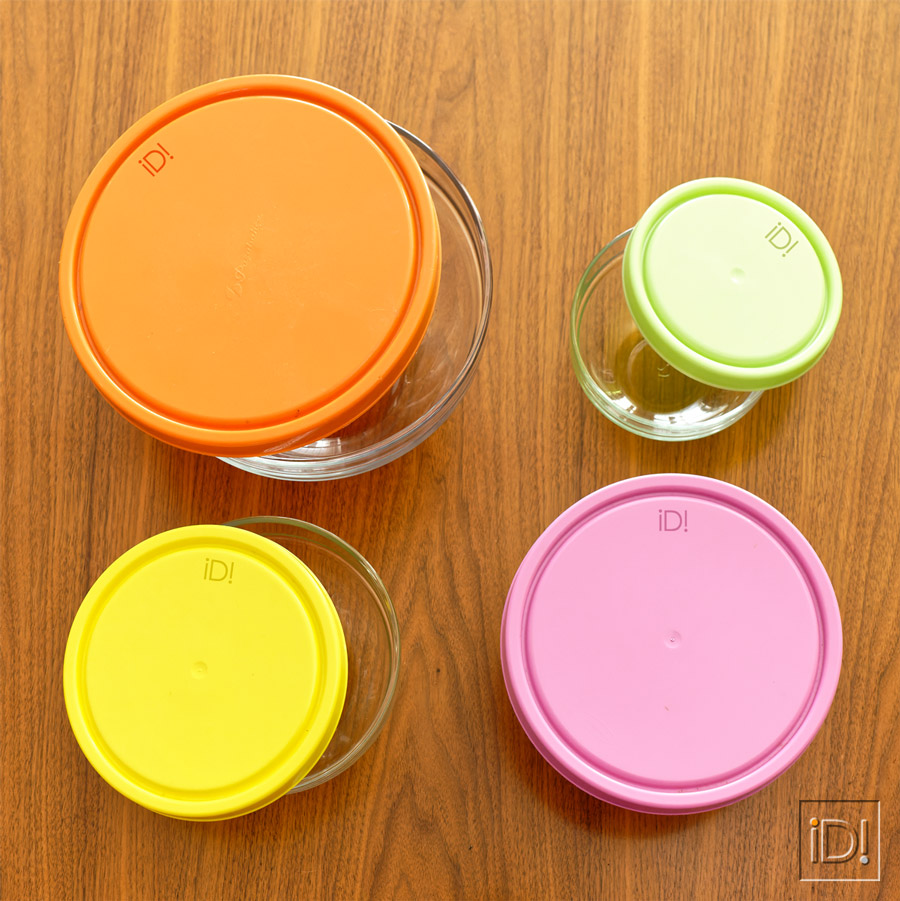
Whether glass, metal or plastic, it's easy to find any shape of container with a suitable lid, including vacuum lids as described in the 1st solution.
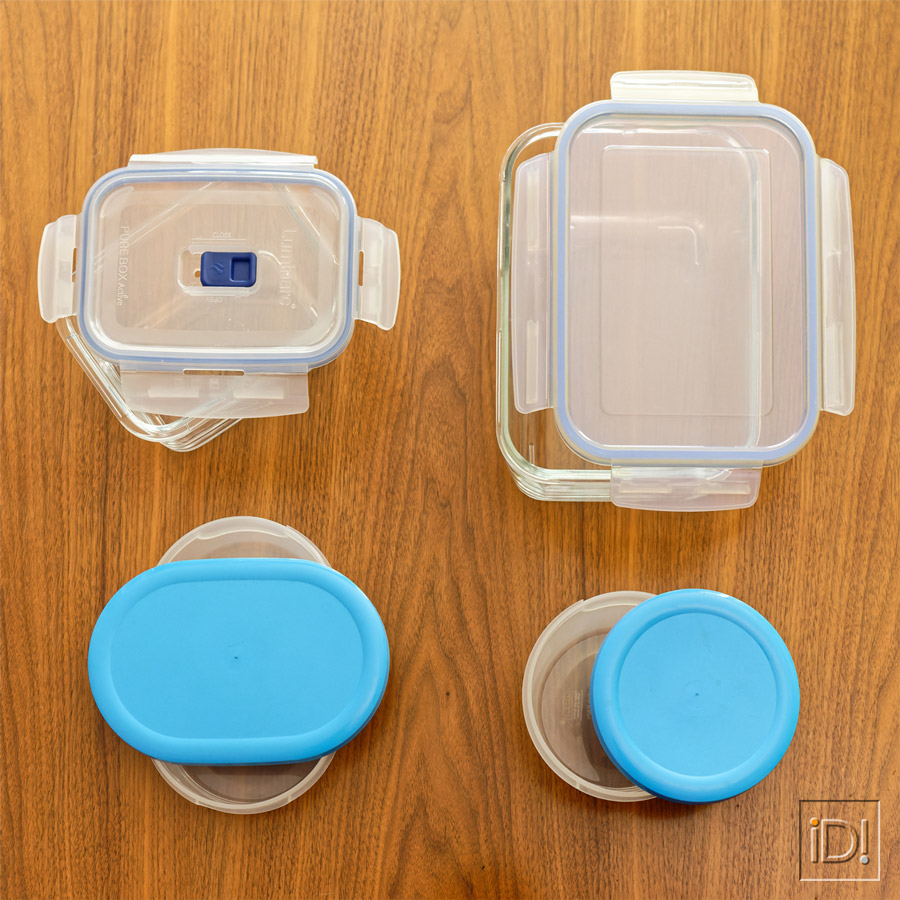
Examples include glass models that can be used to bake or store all types of prepared dishes, and more basic all-plastic models for occasional outdoor use.
The benefits: :
- Excellent durability (especially if glass containers are used).
- Some models can be cooked and preserved.
- Good food protection.
- Replaces plastic film.
- Economical.
Disadvantages:
- Slightly heavier when made of glass.
- Plastic lids more or less recyclable for certain models with silicone.
4. An eco-friendly solution without lids or plastic!
Impossible is not iD!
We present a simple solution, proven by impossible Design! for many years.
For some foods, you can do without lids and plastic and still protect them in the fridge from spoiling or drying out.
For all unpeeled fruit and vegetables that can stand upright on their slices - tomatoes, watermelons, melons, cabbage, citrus fruits, etc. - simply make a clean cut with a knife larger than the food, so that it can lie perfectly flat on a plate in the fridge, avoiding the need for plastic wrap.
Placed upside down on a flat plate, the juice from the food will not, or hardly at all, run off, but will create a kind of natural microfilm protecting the whole slice from the air and preventing it from drying out and rotting for several days.
If your fridge is healthy, you may even be able to exceed 72 hours' preservation with this method.
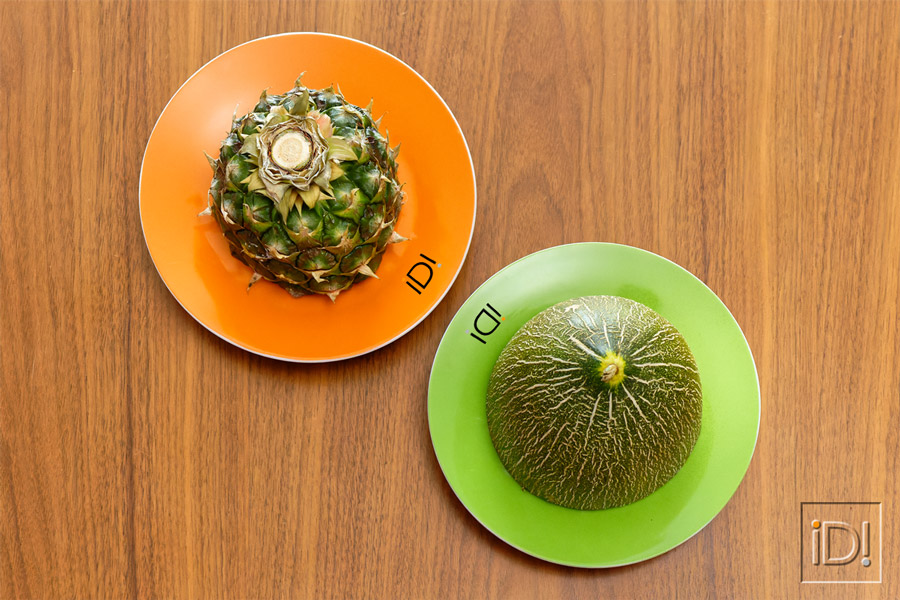
Why wrap an opened melon, pineapple or grapefruit in cling film when you can simply place it upside down on a plate and it will protect itself without drying out or spoiling in your fridge?
The benefits:
- No plastic is used.
- Suitable for many opened fruits and vegetables.
- Ideal solution for meeting singles with large watermelons.
- Know how to handle a large knife.
- You need a big fridge (or lots of shelves) because you can't stack food.
iD+ for stretch film diehards
If the solutions suggested in this article aren't enough to get you to give up your addiction to stretch film, but you'd like to do a little something for the planet: reducing your consumption of plastic film requires just a little ingenuity.
You may have noticed that plastic stretch film is very often much wider than the containers or food on which it is used.
Our tried-and-tested solution is to buy a roll of extra-wide stretch film measuring over 30 cm, then cut it in half to create two smaller rolls that will fit all your bowls, glasses, dishes and other small containers in which your food scraps are stored.
Tutorial for creating a double food stretch film dispenser
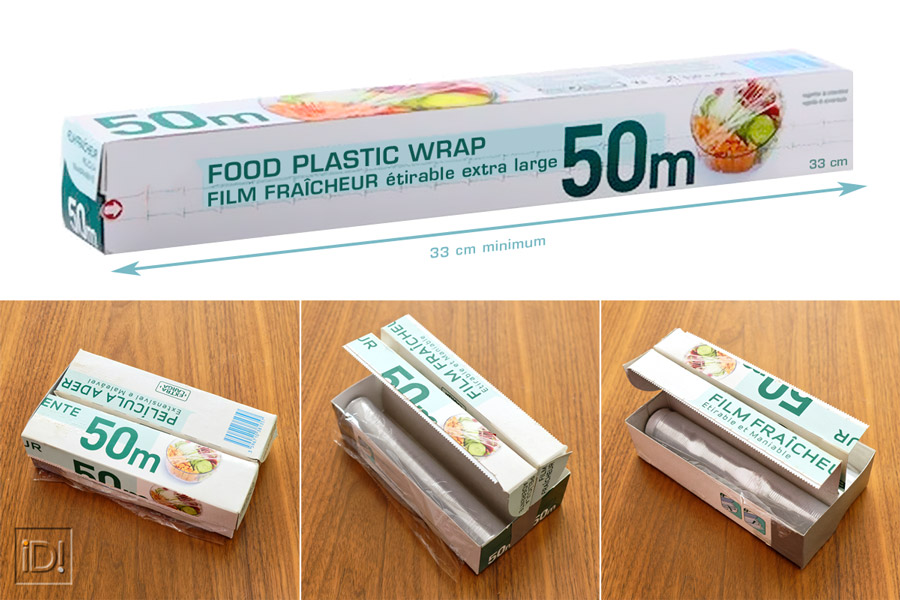
- Buy a roll of extra-wide stretch film.
- Take the roll out of the box.
- Cut it in half with a large box cutter (or hacksaw), shearing slowly and without excessive force, so as not to melt the plastic.
- Also cut the cardboard box in half with scissors (except the back), leaving the cutting teeth on each part.
- Fold the box in half at the back.
- Close the open end with a small piece of taped cardboard.
- Insert mini rolls on either side of the double feeder.
Feel free to give us feedback if you've put this economical reel to use, or subscribe to our feed on Instagram.
Plastic is no longer fantastic
Industrialized since the early 20th century, plastics made from hydrocarbons have invaded our interiors, replacing traditional materials such as glass, wood, metal and wrapping paper in our kitchens.
Plastic seemed to be an ideal product until we realized that its lifespan was quite limited and that it deteriorated over time in the form of micro-particles, polluting all ecosystems for a long time to come. Today, microplastic is everywhere, to the extent that according to a WWF study, we ingest the equivalent of one bank card a week!
The governments of many countries around the world have taken steps since 2020 to reduce the consumption of disposable plastics and promote recycling.
But plastic films are not affected by these measures, as they are used more and more for packaging and, unfortunately, on a daily basis in our kitchens.
You might also be interested in these other tutorials:







